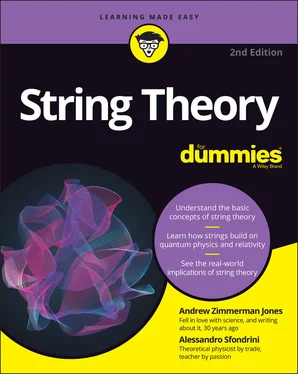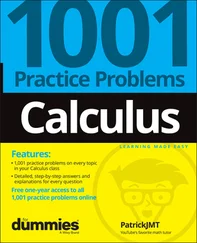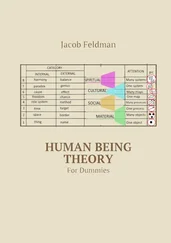In truth, scientists continually make choices that are subjective, such as which questions to pursue. For example, when string theorist Leonard Susskind met Nobel Prize winner Murray Gell-Mann, Gell-Mann laughed at the very idea of vibrating strings. Two years later, Gell-Mann wanted to hear more about Susskind’s theory.
In other words, physicists are people. They have mastered a difficult discipline, but that doesn’t make them infallible or immune to pride, passion, or any other human foible. The motivation for their decisions may be financial, aesthetic, personal, or any other reason that influences human decisions.
The degree to which scientists rely on theory versus experiment in guiding their activities is another subjective choice. Einstein, for example, spoke of the ways in which only the “free inventions of the mind” (pure physical principles, conceived in the mind and aided by the precise application of mathematics) could be used to perceive the deeper truths of nature in ways that pure experiment never could. Of course, had experiments never confirmed his “free inventions,” it’s unlikely that we (or anyone else) would remember his contributions a century later.
Understanding How Scientific Change Is Viewed
The debates over string theory represent fundamental differences in how to view science. As the first part of this chapter points out, many people have proposed ideas about what the goals of science should be. But over the years, science changes as new ideas are introduced, and it’s in trying to understand the nature of these changes where the meaning of science really comes into question.
The methods in which scientists adapt old ideas and adopt new ones can also be viewed in different ways, and string theory is all about adapting old ideas and adopting new ones.
Precision and accuracy: Science as measurement
The transition from early “natural philosophy” to what we now think of as hard science is largely a technological phenomenon that evolved alongside the development of tools that allowed for more precise measurement. The ancient Greeks and Chinese didn’t fail to develop Newton’s theory of gravity because they weren’t inherently intelligent enough. The Greeks are, after all, the same civilization that brought us Socrates, Plato, Aristotle, Euclid, and Archimedes. They were smart enough. What they didn’t have, however, were precise clocks.
Even if they had been inclined to try to develop the sort of science that would later have taken shape during the Enlightenment a couple of millennia later, their theories wouldn’t have taken shape if they couldn’t properly quantify the measurements of what they were talking about. Without precise clocks, it was difficult to make accurate and exact measurements of the time associated with motion.
Within the area where they could measure things precisely, these ancient people did some great work. They used shadows and mathematics to calculate with a fair amount of accuracy the radius and circumference of Earth, for example. Their ability to measure length was more refined than their ability to measure time.
In a practical sense, one of the important things that science accomplishes is making precise and accurate measurements of quantities in the physical world. When people talk about a “scientific fact” that’s truly objective, they’re usually talking about this measurement aspect of science.
Changes in what can be measured, in turn, lead to changes in what can be talked about scientifically. The invention of devices such as the telescope, microscope, and particle accelerator has allowed for measurements and explorations of whole new realms of nature, turning things that had previously been beyond the reach of scientific inquiry into something that can be measured and, in turn, analyzed and better understood.
Old becomes new again: Science as revolution
The interplay between experiment and theory is never so obvious as in those realms where they fail to match up. At that point, unless the experiment contained a flaw, scientists have no choice but to adapt the existing theory to fit the new evidence. The old theory must transform into a new theory. The philosopher of science Thomas Kuhn spoke of such transformations as scientific revolutions.
In Kuhn’s model (which not all scientists agree with), science progresses along until it accumulates a number of experimental problems that make scientists redefine the theories that science operates under. These overarching theories are scientific paradigms, and the transition from one paradigm to a new one is a period of upheaval in science. In this view, string theory would be a new scientific paradigm, and physicists would be in the middle of the scientific revolution where it gains dominance.
A scientific paradigm, as proposed by Kuhn in his 1962 work, The Structure of Scientific Revolutions, is a period of business as usual for science. A theory explains how nature works, and scientists work within this framework.
Kuhn viewed the Baconian scientific method — regular puzzle-solving activities — as taking place within an existing scientific paradigm. The scientist gains facts and uses the rules of the scientific paradigm to explain them.
The problem is that there always seems to be a handful of facts that the scientific paradigm can’t explain. A few pieces of data don’t seem to fit. During the periods of normal science, scientists do their best to explain this data, to incorporate it into the existing framework, but they aren’t overly concerned about these occasional anomalies.
That’s fine when there are only a few such anomalies, but when enough of them pile up, it can pose serious problems for the prevailing theory.
As these abnormalities begin to accumulate, the activity of normal science becomes disrupted and eventually reaches the point where a full scientific revolution takes place. In a scientific revolution, the current scientific paradigm is replaced by a new one that offers a different conceptual model of how nature functions.
At some point, scientists can’t just proceed with business as usual anymore, and they’re forced to look for new ways to interpret the data. Initially, scientists attempt to do that with minor modifications to the existing theory. They can tack on an exception here or a special case there. But if there are enough anomalies, and if these makeshift fixes don’t resolve all the problems, scientists are forced to build a new theoretical framework.
 In other words, during a scientific revolution, scientists are forced not only to amend their theory, but to construct an entirely new paradigm. It isn’t just that some factual details were wrong, but that their most basic assumptions were wrong. In a period of scientific revolution, scientists begin to question everything they thought they knew about nature. For example, in Chapter 10you see that string theorists have been forced to question the number of dimensions in the universe.
In other words, during a scientific revolution, scientists are forced not only to amend their theory, but to construct an entirely new paradigm. It isn’t just that some factual details were wrong, but that their most basic assumptions were wrong. In a period of scientific revolution, scientists begin to question everything they thought they knew about nature. For example, in Chapter 10you see that string theorists have been forced to question the number of dimensions in the universe.
Combining forces: Science as unification
Science can be seen as a progressive series of unifications between ideas that were, at one point, seen as separate and distinct. For example, biochemistry came about by applying the study of chemistry to systems in biology. Together with zoology, this yields genetics and neo-Darwinism — the modern theory of evolution by natural selection, the cornerstone of biology.
In this way, we know that all biological systems are fundamentally chemical systems. And all chemical systems, in turn, come from combining different atoms to form molecules that ultimately follow the assorted laws defined in the Standard Model of particle physics.
Читать дальше

 In other words, during a scientific revolution, scientists are forced not only to amend their theory, but to construct an entirely new paradigm. It isn’t just that some factual details were wrong, but that their most basic assumptions were wrong. In a period of scientific revolution, scientists begin to question everything they thought they knew about nature. For example, in Chapter 10you see that string theorists have been forced to question the number of dimensions in the universe.
In other words, during a scientific revolution, scientists are forced not only to amend their theory, but to construct an entirely new paradigm. It isn’t just that some factual details were wrong, but that their most basic assumptions were wrong. In a period of scientific revolution, scientists begin to question everything they thought they knew about nature. For example, in Chapter 10you see that string theorists have been forced to question the number of dimensions in the universe.










